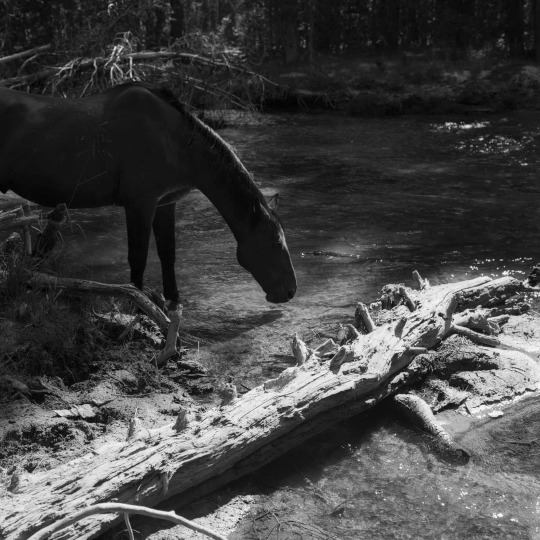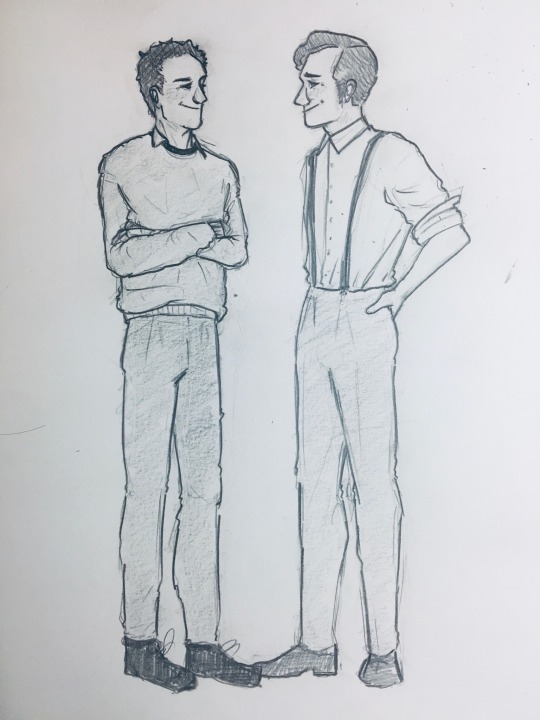#robert koch
Text
She Pasteur on my Koch till I found microbiology
3 notes
·
View notes
Text

youtube
Hát ha egy kicsit kevesebben is vannak, mint a világ legjobb köszönős videójában, de 1971-ben megjelent Svájcban az öttagú, Doktorok nevű bélyegsorozat, az ország különböző fontos orvosaival. Nekem sajnos csak kettő van meg a jelentős úriemberekből (ja igen, doktornők ebben a sorozatban nem szerepelnek, no persze mit várunk abban az országban ahol konkrétan ugyanezen évben kaptak csak a nők válaszójogot!), középtájról, mivel 10-es, 20-as, 30-as, 40-es és 80-as címletek léteztek, centimében értve persze. Nekem Jules Gonin szemészorvos és Robert Koch a híres bakteriológus van meg, a többi bélyegen Alexandre Yersin (10) a pestis baktérium felfedezője, Auguste-Henri Forel (20) pszichiáter/elmegyógyász, és Frederick Banting (80) az inzulin egyik felfedezője látható. A sorozat amúgy, nem túl értékes használt komplett sor, van egy dollárért az ebayen, a postatiszta nagyjából kétszer ennyi. A két legnagyobb címletből nagyjából félannyit nyomtak, mint a másik háromból.
Jules Gonin (30 c)
Lausannei szemészorvos, ott született, halt meg és járta ki az egyetemet. Fő kutatási területe a retinaleválás volt, és ezen a területen ért el jelentős eredményeket a műtéti gyógyítás tekintetében. 1935-ben bekövetkezett halála előtt ennek okán Fiziológiai és orvostudományi Nobelre is jelölték, amit azonban nem kapott meg. Halála után róla nevezeték el a szakmában világhírű lausennei szemklinikát, illetve hazai vonatkozású érdekesség, hogy egy évvel később, 1972-ben egy magyarországi bélyegen is szerepel:

Robert Koch (40 c)
Robert Koch, eredetileg természetgyógyásznak készült, három szemesztert le is hallgatott a göttingeni egyetemen, majd inkább átnyergelt az orvosi szakra, ahol 1866-ban summa cum laude végzett. Ezekután néhány évig több német városban is praktizált, majd 1870-ben önkéntes katonaorvosként is dolgozott a francia-porosz háborúban. Ebben az évtizedben, 1872 és 1880 között végezte azokat a kísérleteket, melyekkel a mikrobiológia élvonalába kerül. 1876-ban robban be a tudományos életbe a lépfene kórokozájának felfedézésvel, és a tanulmány publikálásával. De talán legjelentősebb felfedezései a '80-as években történt amikor azonosította a tuberkolózis és a kolera kórokozóit, utóbbi esetében pedig ennek mentén hatékony intézkedéseket sikerült tenni, hogy akadályozzák annak terjedését. Több egzotikus helyre is elutazott, hogy terepen kutathassa, az emberek és állatok között terjedő különböző fertőző (és ekkoriban sokszor végzetes) betegségeket. Megjárta Afrikát, Egyipotomot, Indiát többek között. 1885-től a berlini Humboldton közegészségügyi professzor, és 1905-ben ő viszont el is nyeri az Orvosi Nobel-díjat, eredményes kutatásaiért. Magánéletét tekintve két felesége volt, akkori időkhöz szokatlanul az elsőtől hivatalosan elválik, házukat megkapja a nő, mivel Koch szerelembe esik a nála harminc évvel fiatalabb 17 éves Hedwig Freiberg színésznőbe. 1893-ban össze is házasodnak, és egészen Koch 1910-ben bekövetkezett haláláig - melyet szívroham okozott - együtt is maradnak. Halála utána róla nevezik el az általa vezetett intézetet, díjat is alapítanak, valamint a legérdekesebb talán a Hold sötét oldalán található Koch-kráter.

#bélyeg#stamp#svájc#switzerland#schweiz#1971#doctors#robert koch#jules gonin#30 centime#40 centime#szemészet#mikrobiológia#tuberkolózis#lépfene
6 notes
·
View notes
Text
This changed when scientists like Louis Pasteur and Robert Koch discovered that many diseases were caused by bacteria that were invisible to the naked eye.
"The Body Keeps the Score: Mind, brain and body in the transformation of trauma" - Bessel van der Kolk
#book quote#the body keeps the score#bessel van der kolk#nonfiction#scientific discovery#scientific advancements#louis pasteur#robert koch#bacteria#disease
2 notes
·
View notes
Text
Scientist Spotlight in the Bredig Archives: Robert Koch, German Microbiologist, Physician, and Nobel Prize Winner
In February 1901, Georg Bredig, a physical chemist working in the laboratory of Wilhelm Ostwald in Leipzig, Germany, sent a copy of his habilitation thesis “Anorganische Fermente” (Inorganic Ferments) to the eminent German microbiologist and physician, Robert Koch (1843-1910), which Koch later thanked him for. A habilitation is the procedure to achieve the rank of professor in many European countries, including in the German speaking lands of Bredig’s time.
Together with Louis Pasteur, Robert Koch is regarded as one of the founders of modern microbiology, particularly for his discovery of various causes of infectious diseases such as cholera, tuberculosis, and anthrax. For his work on tuberculosis, Koch received the Nobel Prize for Physiology or Medicine in 1905. To learn more about Robert Koch, you can read his biography and view a photographic reproduction of his portrait in the digital collections of the Science History Institute.
#robert koch#nobel prize winners#microbiology#papers of georg and max bredig#georg bredig#habilitation thesis
6 notes
·
View notes
Text
History of Microbiology - class by Dr. Indranil Samanta
Theurgical Theory : Theurgical theory suggests that life in early times, before scientific advancements, was governed by various superstitions. Disease followed by death was believed to occur due to the curse of a divine spirit, as a punishment for individual sin.
Miasmatic Theory : proposed by Hippocrates, the Father of Medicine, was outlined in his book "On Airs, Waters, and Places." According to this theory, the four elements—fire, air, water, and earth—and their corresponding qualities—heat, cold, moisture, and dryness—influence the different human body fluids, namely blood, yellow bile, black bile, and phlegm.
• Blood (sanguine): Associated with air and the qualities of hot and wet.
• Phlegm (phlegmatic): Associated with water and the qualities of cold and wet.
• Yellow bile (choleric): Associated with fire and the qualities of hot and dry.
• Black bile (melancholic): Associated with earth and the qualities of cold and dry.
Changes in the elements or qualities can lead to diseases, including epidemics. The term "miasma" refers to bad air, which is believed to be a source of disease transmission, hence the name "miasmatic."
Pore Theory : Pore theory was proposed by Asclepiades. He believed that the body was composed of atoms and pores. He theorized that health depended on the harmonious movement of atoms and the unobstructed flow of pneuma (vital energy) through the body's pores. The symmetry of the pores present in the body generate a healthy individual, while asymmetry or blockage of pores lead to disease and infection.
Paracelsus Theory : proposed by Paracelsus, a Renaissance physician. He proposed that natural forces, particularly imbalances in the fundamental principles of sulfur, mercury, and salt, were responsible for causing diseases. He believed in the influence of planets and stars on human body.
Spontaneous Generation : also known as abiogenesis.
Aristotle first proposed this theory. According to this theory, animals originate from soil, water, plants, decaying organic matter or other unlike animals if the specific heat or pneuma is present. He believed that inanimate matter possessed a "life force" or "vital heat" (pneuma) that could give rise to living organisms when activated under suitable conditions.
–Fransisco Redi, (1626-97), Italy conducted experiments to disprove the theory of spontaneous generation. He observed that maggots are not produced in meat, if it's covered with a cloth.
Redi aimed to demonstrate that maggots did not arise spontaneously from decaying meat but instead originated from eggs laid by flies. In one set of experiments, he covered some jars with gauze to prevent flies from accessing the meat, while leaving others uncovered. Over time, Redi observed that maggots only appeared in the uncovered jars where flies could access the meat. In the jars covered with gauze, where flies were unable to lay their eggs on the meat, no maggots appeared.
–John Needham, (1713–1781), England supported theory of spontaneous generation.
He boiled nutrient broths such as chicken meat extract gravy and plant infusions (herbs) in tests tubes and then sealed the test tubes in an attempt to sterilize the broths. But he observed turbidity in the test tubes due to microbial growth. These observations led Needham to conclude that his experiments supported the theory of spontaneous generation, as he believed that the microorganisms had arisen spontaneously from the nutrient broth. But in reality, it had occurred due to improper boiling/sterilization of the broth.
–Lazzaro Spallanzani, an Italian biologist challanged John Needham's findings. Spallanzani conducted similar experiments but took extra precautions to ensure the complete sterilization of the nutrient broth and the exclusion of airborne contaminants. After extensive heating upto boiling point and sealing off the broth can prevent turbidity even after several days.
–Schroder and von Dusch : Heinrich Georg Friedrich Schröder and Theodor von Dusch's method of air sterilization by filtration through cotton. They conducted experiments to demonstrate the effectiveness of air sterilization by heating nutrient broth in a test tube and sealing it with cotton wool. No turbidity/microbial activity was observed even after 7 days.
Their experiments provided evidence that filtering air through cotton wool could effectively remove airborne microorganisms and prevent contamination of nutrient broth.
This method of plugging with cotton wool is still practiced in laboratory.
–The debate about spontaneous generation was a significant scientific controversy that spanned several centuries, from ancient times to the 19th century. In the mid-19th century, the Paris Academy of Sciences recognized the need to resolve the controversy surrounding spontaneous generation versus biogenesis. To encourage scientific inquiry and experimentation on the topic, the Academy offered a prize to whoever could definitively demonstrate whether spontaneous generation truly occurred or whether all living organisms arose from pre-existing life (biogenesis).
–The experiments of Louis Pasteur, particularly his swan-neck flask experiments in the 1860s, provided compelling evidence against spontaneous generation. In this experiment, Pasteur took broth in a flask with a tortuous neck and heated it thoroughly. This killed all microbes present in the broth. He then cooled the flask and kept the flask unplugged. No microbial turbidity was observed even after several days. Although air entered from the atmosphere into the flask, all the germs were settled in the swan neck; hence, no microbial growth occurred.
Germ Theory : Kircher first used a low power microscope to observe the microbes present in the blood smear of plague patient in 1590-1610.
First compound microscope was developed in Netherlands by optician Hans Jansen and his son Zacharias. It was improved by Cornelis Drebbel.
–In the late 17th century, the Dutch scientist Antonie van Leeuwenhoek developed a series of microscopes with higher magnification and and observed microbes of different shapes and sizes in pond water. He described them as "animalcules" (animal+molecules).
–Jacob Henle, a German physician, proposed germ theory and important ideas related to disease transmission and contagia in his book on miasmata and contagia in the 1840s. [He is credited as a founder of germ theory] - prof said but, The germ theory of disease, which states that microorganisms can cause infectious diseases, is often attributed to Louis Pasteur and Robert Koch in the 19th century.
Louis Pasteur modified the theory and stated that all contagious and infectious diseases are caused by living organisms or germs.
–Joseph Lister supported germ theory and first used the antiseptic phenol (carbolic acid) to treat the wounds in 1867.
–Davaine observed the contagious nature of germs and demonstrated the relationship between bacteria and disease (that bacteria were responsible for causing the disease), particularly anthrax.
–The term bacteria was coined by German scientist Christian Gottfried Ehrenberg in 1829.
–The germ theory was finally established with the classical work of Robert Koch, a physician, microbiologist and student of Jacob Henle. He identified the causative agents of anthrax, tuberculosis, and cholera, this provided strong evidence that specific microorganisms could cause specific diseases, confirming the germ theory. Koch's discovery of these disease-causing agents, along with his formulation of Koch's postulates revolutionized the understanding of infectious diseases.
Individual scientific contributions :
Edward Jenner : Edward Jenner was a country surgeon in Bristol, UK. He first observed that dairymaids who suffered from cowpox never got infected with smallpox. On May 14, 1796, he collected fresh cowpox lesion extract from Sarah Nelmes, his dairymaid, and inoculated the same into an 8-year-old boy. In June, Edward Jenner inoculated the same boy with smallpox lesion obtained from a patient with smallpox, and his body remained healthy. From there, vaccination emerged.
The word "vaccine" comes from the Latin word "vacca," which means "cow."
Louis Pasteur : Father of Microbiology
1. He established the germ theory of fermentation, which is still used for milk disinfection.
2. Pasteur is credited with formulating the germ theory of disease.
3. He was the first to vaccinate chickens with Pasteurella multocida culture
4. In honor of Edward Jenner's work, he coined the term "vaccination."
5. In 1884, Pasteur began his groundbreaking work on the attenuation of the rabies virus. He collected virus-infected rabbit spinal cord and inoculated it into a boy named Joseph. This experiment marked a significant milestone in the development of rabies vaccines.
6th July is celebrated as World Zoonosis Day. It commemorates the day in 1885 when Louis Pasteur successfully administered the first rabies vaccine to a human, Joseph Meister.
Robert Koch : Father of Bacteriology
He was the first to depict bacterial reproduction and isolation of bacteria using solid plating techniques. He also performed fixation of bacteria which allowed researchers to visualize bacteria and study their morphology, structure, and characteristics in detail. Koch's pioneering work on the causative agents of infectious diseases was groundbreaking. He identified the bacterium Bacillus anthracis as the causative agent of anthrax, Mycobacterium tuberculosis as the causative agent of tuberculosis, and Vibrio cholerae as the causative agent of cholera and Staphylococcus for pus formation.
Koch's Postulates are the following:
1) A specific organism can always be found in association with a given disease.
2) The organism can be isolated and grown in pure culture in the laboratory.
3) The pure culture will produce the disease when inoculated into a healthy experimental animal.
4) It is possible to recover the organism in pure culture from the (experimentally) infected animal.
#vmc#veterinary microbiology#microbiology#history of microbiology#robert koch#louis pasteur#edward jenner#studyblr
0 notes
Text
Circle 35
Artist: Foam and Sand, featuring Robert Koch & Stewart Cole
Release: 2023
#ambiant music#ambiant#Foam and Sand#Robert Koch#Stewart Cole#relaxing music#electronica#electronica music#electronic music
0 notes
Text
1910–Robert Koch

Heinrich Hermann Robert Koch (English: /kɒx/KOKH,[1][2]German: [ˈʁoːbɛʁt ˈkɔx] (listen); 11 December 1843 – 27 May 1910) was a German physician and microbiologist. As the discoverer of the specific causative agents of deadly infectious diseases including tuberculosis, cholera (though the bacterium itself was discovered by Filippo Pacini in 1854), and anthrax, he is regarded as one of the main founders of modern bacteriology. As such he is popularly nicknamed the father of microbiology (with Louis Pasteur[3]), and as the father of medical bacteriology. His discovery of the anthrax bacterium (Bacillus anthracis) in 1876 is considered as the birth of modern bacteriology. His discoveries directly provided proofs for the germ theory of diseases, and the scientific basis of public health.
#May.27.1910#date of death#Robert Koch#German physician#microbiologist#Nobel Prize laureate#father of medical bacteriology#history today
0 notes
Photo


https://www.youtube.com/watch?v=kDtvewYOfZY
#elisabeth flickenschildt#emil jannings#robert koch#robert koch der bekämpfer des todes#hans steinhoff#1939#familie buchholz#toxi
0 notes
Text
0 notes
Text

#republican assholes#republican party#maga morons#Republican oligarchs#Rupert Murdoch#Koch family#Walton family#DeVos/Prince family#Robert Mercer#Harlan Crow#Leonard Leo#Elon Musk#never trump#traitor trump#crooked donald#culture war#wage slaves#war on the middle class#middle class death#union busting Republicans
178 notes
·
View notes
Text

Leepa sleeps
Mimi Plumb’s Megalith-Still is a meditation on the sublime of the untamed American landscape – featuring numerous equine models. Here we see one fast asleep. Young horses often sleep up to 12 hours a day.
Horse play: elegant equines in the American landscape – in pictures
All photographs: Mimi Plumb/Courtesy Robert Koch Gallery and Stanley/Barker

In the woods
Heading to the river in the late afternoon. Over the course of multiple summers between 1995 and 2005, Plumb travelled from her home in San Francisco to Kings Canyon, a wilderness where she communed with a band of semi-wild horses

Testing the water
Ger gets ready to roll in the wet meadow

Leepa crossing the river
Mimi Plumb: ‘I am in a meadow high in the Sierra Nevada. Channels of the San Joaquin River braid through the thick, lush grass. I take off my shoes and socks, roll up my pants and wade through the shallow water to where the horses are now eating. They trace a pattern, mysterious to me, around and around the meadow, eating, drinking and sleeping’

The band
Late in afternoon, the herd of 20 to 30 horses abruptly leave the meadow in a single line, heading to an island across the river

Drinking water along San Joaquin River
‘When I reach the edge of the main riverbank, I see the last of the horses cautiously step into the deep, swift moving water, and slowly float to the other side’
#mimi plumber#photographer#robert koch gallery#stanley/baker#horses#black & white photography#animal#mammals#equines#united states#nature
10 notes
·
View notes
Text


tfw dein lieblingslehrer ständig mit dem schularzt im gang flirtet 🙄
#this one goes out an die 5 dfk girlies (gn) die ich im tag gesehen hab#ihr habt mir den nachmittag versüßt und mich erfolgreich davon abgehalten an meinem vortrag zu arbeiten#scheiß auf master justraucher ist mir wichtiger ✊😔#dfk#johann bökh#robert uthoff#wie die im buch einfach anfnag dreißig sind#babys#eig ist das ein eigenes auf dem buch basierendes design aber der nichtraucher sieht schon hart wie sebastian koch aus#tja#gib schlimmeres#zb traditional art so zu foografieren dass es nicht wie absolute scheiße aussieht#ich weiß schon warum ich normalerweise digital poste#das fliegende klassenzimmer
8 notes
·
View notes
Text

“Ring to Commemorate the First 2-Hour Flight in a Hot Air Ballon" by Robert Brothers over the Tuileries in Paris in gold, rubies and diamonds (circa 1783) presented in “A History of Jewellery: Bedazzled (part 10: Focus on Rings in the Alice and Louis Koch Collection)” by Beatriz Chadour-Sampson - International Jewellery Historian and Author - for the V&A Academy online, april 2024.
#conferences#inspirations bijoux#XVIIIe siècle#rubis#diamant#Robert#Koch#ChadourSampson#V&AAcademy#Victoria&AlbertMuseum
2 notes
·
View notes
Text

János Szász - In Winter. Robert Koch Gallery
2 notes
·
View notes
Text

Dale Robertson-Marianne Koch "La costa de los mosquitos" (Coast of skeletons) 1965, de Robert Lynn.
14 notes
·
View notes
Text










via dfb_team, Koch, Tah, Raum, Rüdiger and Andrich's instagram stories
#germany nt#german nt#dfb team#190324#robin koch#jonathan tah#david raum#antonio rüdiger#robert andrich#toni kroos#kai havertz#pascal groß
4 notes
·
View notes